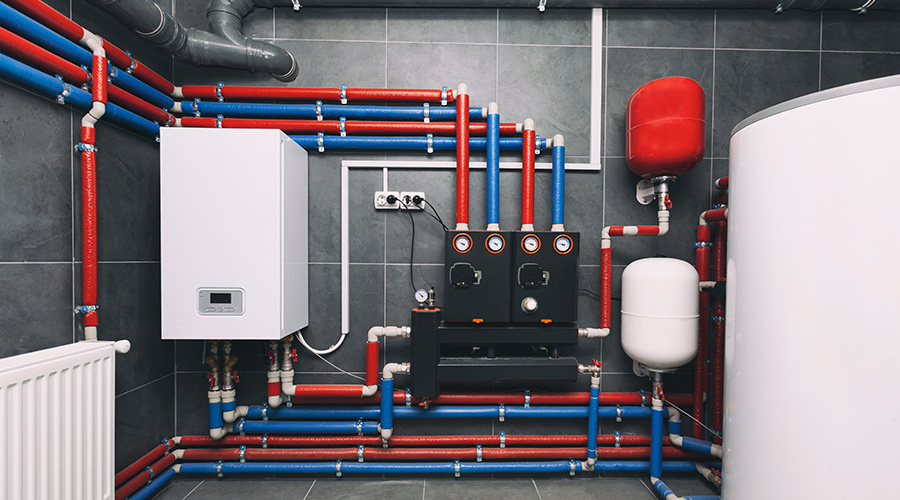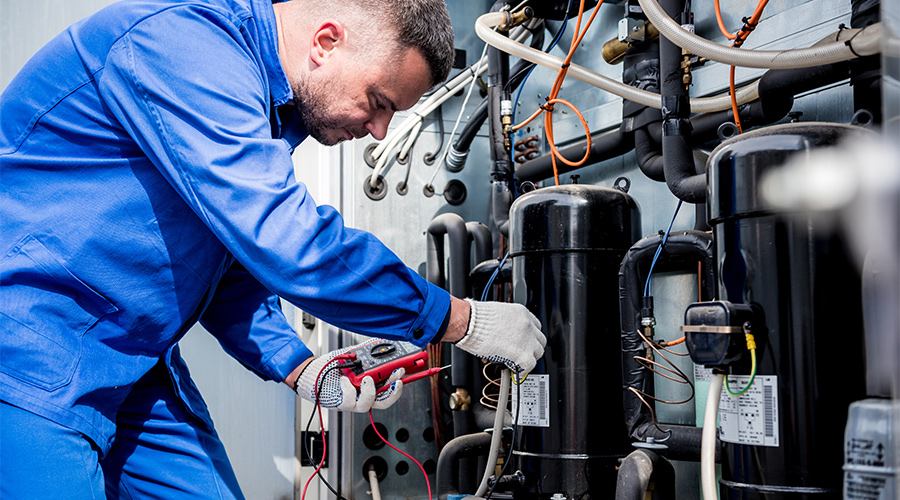Cooling Equipment Needs Vary by Client
Equipment evolution
For managers trying to keep up with expanding heat loads in their facilities, advances in equipment needing supplemental cooling, including servers and telephone switching equipment, often complicate the challenge.
"Heat generation from facility and IT equipment continues to increase, creating higher heat densities as technology advances," Stevenson says. "This trend increases the chances for hot spots and heat pockets to develop, and in many cases the addition of new equipment outstrips the building's cooling capability."
The changes in servers and other equipment can mean greater difficulty specifying cooling equipment.
"In general, we're seeing the physical size of things get smaller, so the heat can be denser," Michel says. "Just because you see a server of a certain physical size and you see a similar one a year or two later, the newer one might very well be giving off more heat. Smaller and smaller physical boxes can do more and more work, and in general, they give off more heat."
Manufacturers have begun to address the problem by developing products that incorporate cooling technology.
"There have been companies that have addressed server racks, for instance, with cabinets that have a dedicated cooling unit in the cabinet," Tagge says. "So it provides not only the cooling instrument but the cabinetry and the housing and the means of distribution. Now customers just plug the servers into the racks. But that addresses such a small portion of the market that you don't see it often."
Space exploration
Identifying heat sources is only one consideration in specifying supplemental cooling equipment for key areas of facilities. Managers also must understand other key characteristics of the space in which the equipment will operate.
"What kind of electrical power is available in the room to run the cooling equipment?" Behnke asks. "If there is not adequate power, you have to bring it in. Generally, in an office environment, all the electrical circuits in the room are going to be 110- or 115-volt, single-phase power. Well, air conditioners over 1 ton require 208-volt single-phase power and generally a 16- or 20-amp circuit.
"You also have to take into account the blowers on the air conditioner, the evaporator, and the condenser. If you add up all those and it exceeds the room's 115-volt capability, then you don't have adequate power in the room."
Managers also must ensure the space allows them to efficiently get rid of the hot air pulled from servers and other heat-producing sources.
"When you're specifying air conditioning, it's transferring heat from one location to another," Behnke says. "If you're going to use an air-cooled system, the hot air from the condenser section has to be discharged outside the space you're cooling. You have to be able to discharge that to a large plenum — an open space above the ceiling — or to a duct system that can exhaust it out of the space and outside the building. If you just dump it above a suspended ceiling without pulling any of the hot air out of there, over time, the heat will build up in that cavity and migrate back down through the ceiling tiles."
What lies ahead
One big wild card in the process of specifying supplemental cooling equipment for key operations in facilities is determining the best way to plan for the future addition of more equipment or space that will require supplemental cooling. Manufacturers say they rely on customers to help them determine this need.
"You have to interview the clients," Michel says. "They should know if there are any plans to add more equipment or people to the room. You'd hate to put some cooling in place and then, two months later, it's insufficient because they've added more heat load to the room.
"Anybody's who has done it before is probably going to want to add a little cushion. Let's say it's an unusually hot day outside, or a special purpose has been added to the room temporarily that's also adding heat. You don't want to be the guy who puts in the absolute bare minimum (amount of cooling), and there comes a day when it's not quite enough."
Related Topics:














